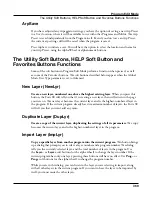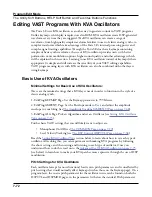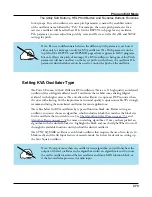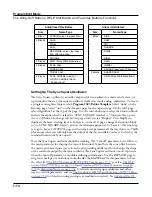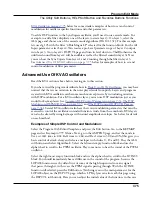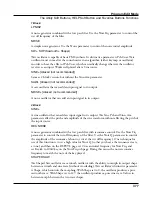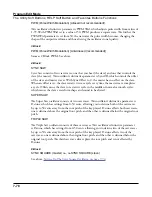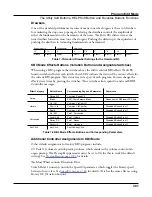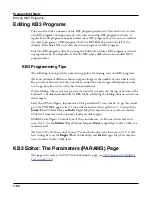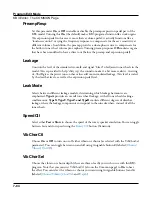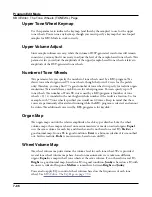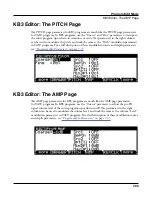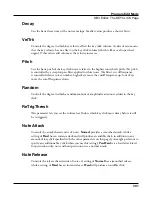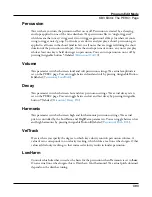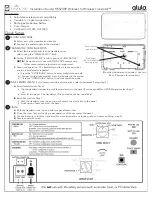
Program Edit Mode
The Utility Soft Buttons, HELP Soft Button and Favorites Buttons Functions
7-80
KB3 Program Structure
There’s nothing quite like the sound of the classic Hammond™ B3 tone wheel organ,
especially when played through a Leslie™ rotating speaker system. We’ve done extensive
testing and analysis with several tone wheel organs, and created our own models to emulate
the unique tone wheel sound. We even took into account the way that older organs start to
sound different (and arguably better) as their capacitors begin to leak—and we included a
parameter that lets you vary the amount of grunge (leakage) in your sound.
KB3 programs use oscillators to emulate the tone wheel sound. Each oscillator operates
independently, and has its own pitch and amplitude control. You can control how many
oscillators are used for a KB3 program. There are two oscillators per voice, for a total of 256.
You can use up to 91 of them in a KB3 program (the 92nd is reserved to produce key click).
Because the oscillators start running as soon as you select a KB3 program, there are always
voices available—unlike VAST programs, which start “stealing” notes when you reach the
polyphony limit.
The oscillators—we’ll call them tone wheels from here on—are divided into an upper and
lower group. The upper tone wheels use the samples in the Forte SE’s keymaps to generate
sound, while the lower tone wheels use sine waves. You can change the keymap of a KB3
program’s upper tone wheels to produce a large array of sounds. By changing the keymap
from sine to a saw wave it is possible to emulate the sound of classic combo organs like the
Vox™ and Farfisa™ models.
KB3 programs are also routed through vibrato, rotary speaker, preamp and distortion effects,
see below for details.
KB3 Mode
KB3 programs are different enough from VAST programs that we use the term KB3 mode to
describe what’s going on when you play a KB3 program. Whenever you play a KB3 program,
you are in KB3 mode. The blue LED on the front panel will light when the current program
is a KB3 program. You can play KB3 programs only on a single channel at a time.
If you want to create your own KB3 program, start by editing an existing KB3 program.
KB3 Effects And Real-time Controls
You have real-time control over many components of KB3 programs directly from the front
panel. The sliders emulate the drawbars that are so essential to the tone wheel sound, while
the buttons above them (the Assignable Switches) can control the KB3 effects: Leslie, vibrato,
chorus, and percussion.




